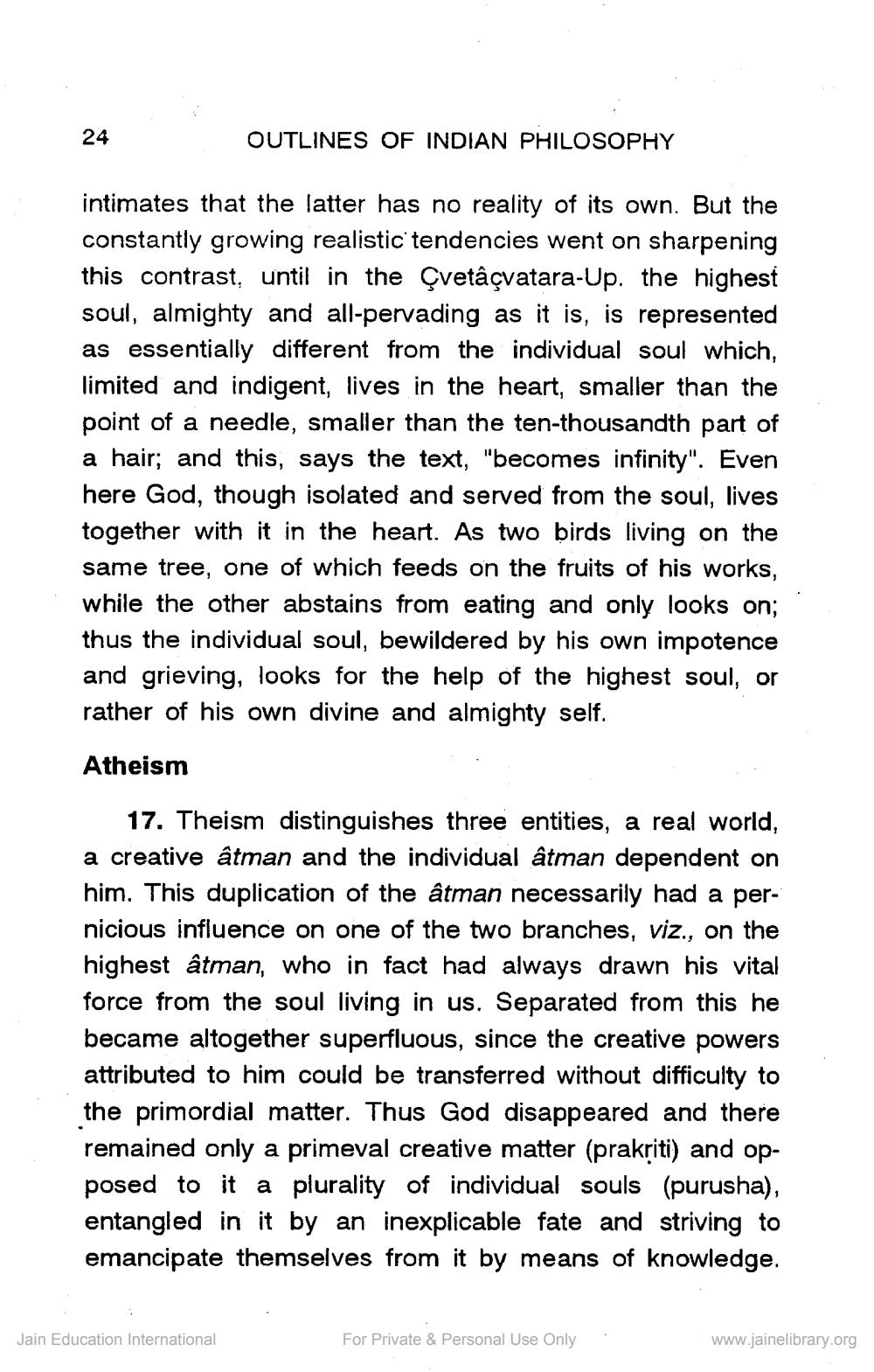________________
24
OUTLINES OF INDIAN PHILOSOPHY
intimates that the latter has no reality of its own. But the constantly growing realistic tendencies went on sharpening this contrast, until in the Cvetâçvatara-Up. the highest soul, almighty and all-pervading as it is, is represented as essentially different from the individual soul which, limited and indigent, lives in the heart, smaller than the point of a needle, smaller than the ten-thousandth part of a hair; and this, says the text, "becomes infinity". Even here God, though isolated and served from the soul, lives together with it in the heart. As two birds living on the same tree, one of which feeds on the fruits of his works, while the other abstains from eating and only looks on; thus the individual soul, bewildered by his own impotence and grieving, looks for the help of the highest soul, or rather of his own divine and almighty self. Atheism
17. Theism distinguishes three entities, a real world, a creative âtman and the individual âtman dependent on him. This duplication of the âtman necessarily had a pernicious influence on one of the two branches, viz., on the highest âtman, who in fact had always drawn his vital force from the soul living in us. Separated from this he became altogether superfluous, since the creative powers attributed to him could be transferred without difficulty to the primordial matter. Thus God disappeared and there remained only a primeval creative matter (prakriti) and opposed to it a plurality of individual souls (purusha), entangled in it by an inexplicable fate and striving to emancipate themselves from it by means of knowledge.
Jain Education International
For Private & Personal Use Only
www.jainelibrary.org




